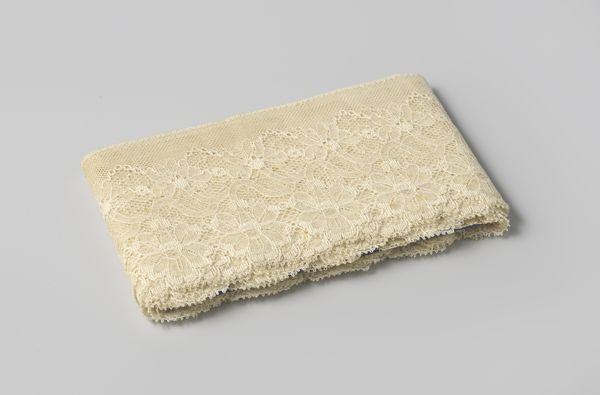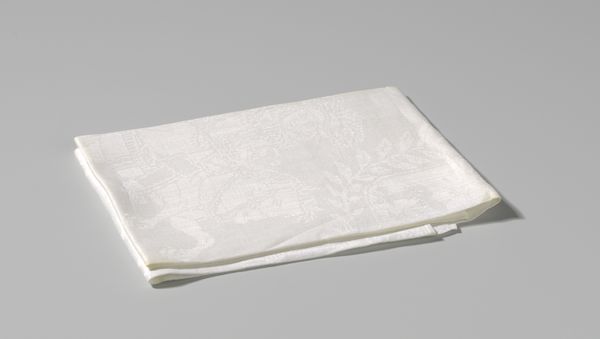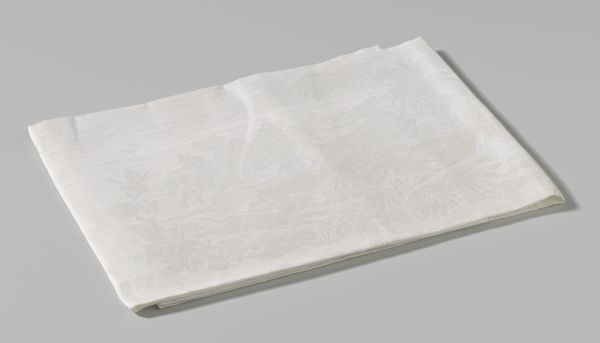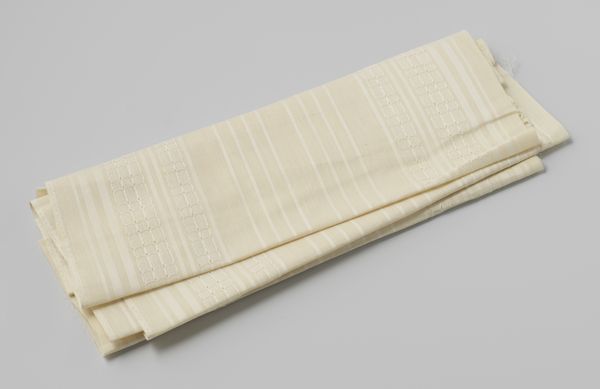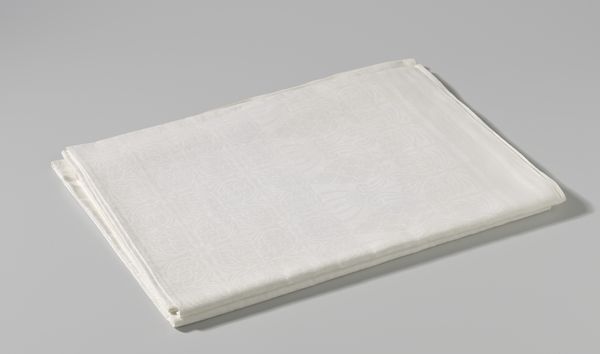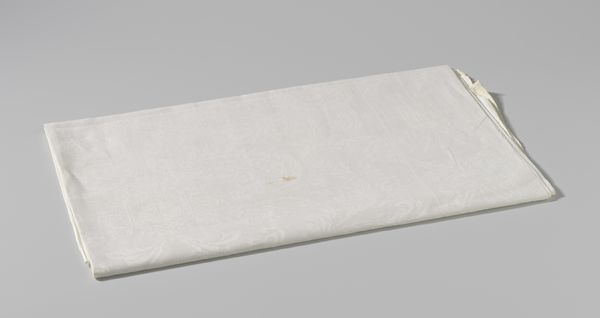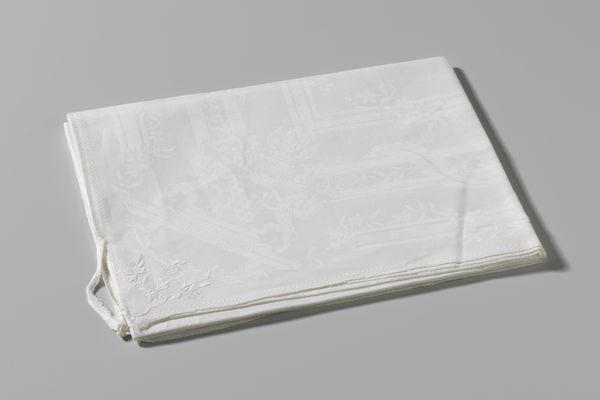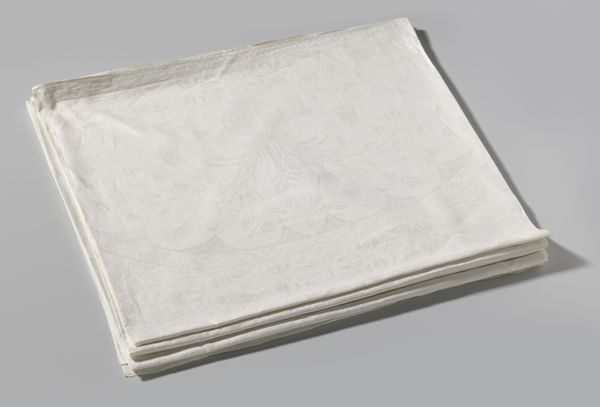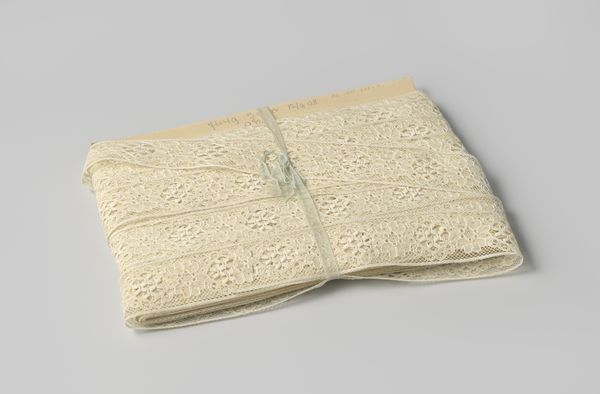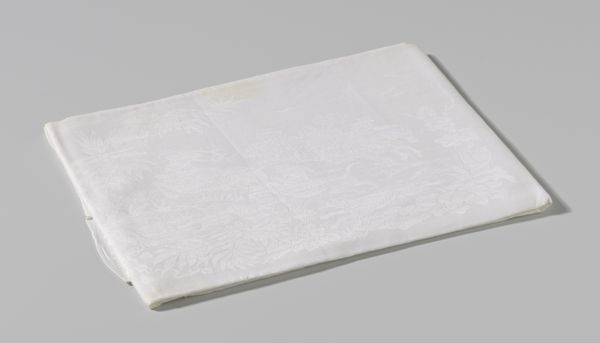
Tussenzetsel van roomwitte machinale kant met patroon van aaneengeschakelde bloemen, op karton c. 1925
0:00
0:00
textile, photography
#
studio photography
#
aged paper
#
book binding
#
studio lighting mockup
#
textile
#
personal journal design
#
photography
#
personal sketchbook
#
book mockup
#
publication mockup
#
design on paper
#
foil embossing
Dimensions: width 3.8 cm, width 20.8 cm, length 27 cm
Copyright: Rijks Museum: Open Domain
This is a roll of machine-made, cream-white lace, with a pattern of interconnected flowers. It’s mounted on a piece of cardboard, and now resides in the collection of the Rijksmuseum. The key thing to note here is that this is machine-made lace. Before the industrial revolution, lace was made by hand, a painstaking process. It became a symbol of wealth and status, adorning the garments of the elite. But with the advent of machines capable of producing lace, things changed dramatically. Suddenly, lace was available to a much wider segment of society. This had huge implications for the labor market, as many skilled lacemakers found themselves out of work. But it also democratized fashion, as ordinary people could now afford to incorporate this delicate material into their clothing and home décor. This little roll of lace, therefore, embodies a pivotal moment in the history of production and consumption, reflecting the complex interplay between craft, technology, and society.
Comments
No comments
Be the first to comment and join the conversation on the ultimate creative platform.
